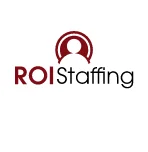People power production. In light industrial work, retention is not just an HR metric. It is the difference between steady output and missed orders.
Turnover hits light industrial employers hard. Each exit drains time and money as teams recruit, train, and backfill. Production slows down, and supervisors scramble. Morale slips and performance falls across the line. Keep people longer by offering benefits employees value and can use right away. Examples include reliable schedules, fair pay, health coverage, paid training, and clear paths to grow. When workers feel valued, operations are steady and disruptions fade.
We highlight seven proven benefits that help retain light industrial workers. Each one is actionable and signals respect. When people feel supported, they stay.
Why Retention Benefits Matter in Light Industrial Work
High turnover drains budgets and resources in multiple ways. Recruitment campaigns, hiring processes, and training programs all demand money and time. During these periods, productivity falls because fewer experienced workers remain available on the floor. Managers are forced to divert attention from operational goals to constant staffing concerns.
Retention benefits address this cycle directly. They help workers feel respected, stable, and appreciated, encouraging them to stay. A workforce that remains longer develops stronger skills, works more smoothly as a team, and produces better results. In industries where schedules are demanding and output matters daily, retention programs are not optional. They are the foundation of consistent performance.
Competitive Wages and Steady Pay
Compensation is the first factor workers consider. Light industrial jobs often require physical effort, and people compare wages carefully. If pay falls behind market expectations, workers leave for other employers without hesitation. Offering fair wages communicates that the company values hard work.
Steady and accurate pay also matters greatly. Workers need to trust that paychecks will arrive on time without errors. Consistent raises linked to tenure or strong performance reinforce this trust further. These adjustments make workers feel acknowledged for their effort and longevity.
When employers get compensation right, retention improves. Workers become more willing to continue in difficult jobs when pay reflects both effort and fairness. This creates a reliable base for long-term employment.
Health and Safety Programs
Light industrial jobs often involve machinery, heavy lifting, and long hours. Workers need to know that their safety is taken seriously. Companies that prioritize health and safety build trust that lasts far longer than any recruitment advertisement.
Safety programs are strongest when they include multiple visible actions. For example:
- Regular training keeps safety guidelines fresh and prevents accidents.
- Protective equipment provides the right gear for every task.
- Inspections and audits prove management is committed to safe practices.
- Emergency plans ensure workers know exactly how to respond.
Health support reinforces these safety measures. Medical insurance, wellness checks, and affordable clinic access all reduce stress and provide peace of mind. Workers who see health taken seriously are far more likely to remain loyal to an employer.
Accidents and health problems drive workers away quickly, but visible investment in safety builds retention. People remain where they feel safe, supported, and healthy enough to continue working.
Training and Skills Development Opportunities
Repetition can make industrial jobs feel monotonous. Training programs transform that perception by giving workers new challenges and growth. Companies that offer skill development communicate that they see employees as long-term contributors, not disposable labor.
Training can include technical certifications, cross-training on different machines, or lessons in process improvement. These opportunities expand knowledge and allow workers to feel progress in their careers. At the same time, companies benefit because trained employees make fewer mistakes and complete tasks more effectively.
Workers who sense that they are learning stay longer. Skills development gives them pride in their abilities and hope for advancement. This two-way investment strengthens the connection between employer and employee.
Career Growth and Internal Promotions
Workers remain committed when they see clear paths for advancement. If a job feels temporary or stagnant, workers leave quickly for better opportunities elsewhere. Companies that promote from within demonstrate that effort and dedication will be rewarded.
Growth does not have to mean management roles. Workers can move into supervisory positions, specialized machine roles, or team leadership assignments. Each pathway demonstrates that progress is achievable for those who want it.
Internal promotions also save companies money. Instead of paying for outside recruitment and training, they build on existing knowledge within the workforce. Workers who see these promotions happening believe that their own future can be brighter within the company, which strengthens retention significantly.
Work-Life Balance and Flexible Schedules
Schedules influence retention as strongly as paychecks. Long shifts and irregular hours create stress, which pushes workers to leave. Employers who respect balance retain workers far more effectively.
Support for balance can take many clear forms, including:
- Predictable schedules that allow families to plan daily life.
- Shift preferences that accommodate personal obligations more effectively.
- Reasonable overtime policies that reduce burnout and exhaustion.
- Respectful time-off requests that acknowledge personal needs.
Workers who feel respected in their time commitments are less likely to seek new jobs. Flexibility improves morale because it signals that workers are seen as people, not interchangeable parts. Retention improves when employers offer schedules that allow workers to balance their jobs with personal lives.
Recognition and Incentive Programs
Workers want acknowledgment for effort and results. Without recognition, frustration grows and loyalty fades. Recognition and incentive programs demonstrate that contributions matter.
Recognition can take different forms. Some companies provide financial incentives like bonuses or performance rewards. Others use smaller acknowledgments such as thank-you notes, public appreciation during meetings, or employee recognition boards. The most important factor is consistency and fairness.
When workers believe recognition is real and fairly distributed, they remain engaged. Incentives encourage ongoing effort and loyalty. When companies overlook recognition, they risk higher turnover and weaker performance.
Supportive Workplace Culture
A respectful culture is one of the strongest retention benefits. Workers stay longer in environments where they feel heard and valued. Managers play a central part by listening carefully and treating everyone fairly.
Teamwork also matters greatly. Crews that communicate well and support each other create stronger connections. Workers who feel included are more likely to stay, even through challenging conditions.
Culture takes time to build. It requires daily actions, consistent communication, and clear respect from leadership. Once established, culture becomes a powerful reason for workers to remain, because people naturally want to stay where they feel valued.
Conclusion
Retention depends on specific actions that employers take every day. Competitive wages, safety programs, training, career growth, balanced schedules, recognition, and supportive culture all contribute directly to stronger retention.
These benefits reduce turnover, strengthen production, and improve morale across crews. Workers gain security, opportunities for growth, recognition, and respect. Companies gain reliable teams and fewer disruptions.
Retention does not depend on one single initiative. It grows from consistent, clear benefits that prove to workers that they matter. Employers who understand this see stronger loyalty and steadier performance. Workers remain where they know they are valued, and these seven benefits provide exactly that assurance.
At ROI Staffing, we help you attract, recruit and engage top candidates. We optimize your talent strategy and help you meet your unique hiring and talent management needs. Reach out now.








![Field Service Technician Job Description [2024 Updated]](https://roistaffing.com/wp-content/uploads/2024/04/Field-Service-Technician-Job-Description-2024-Updated.jpg)

